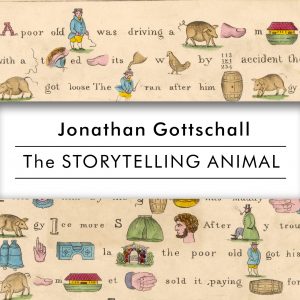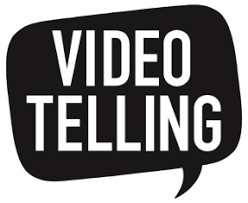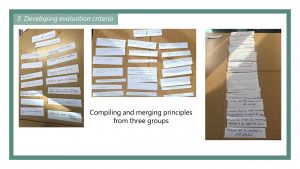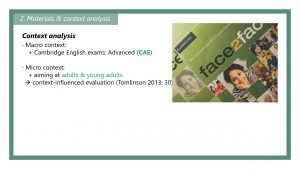In this module, I have gained a tremendous amount of information and insights into the field of designing teaching materials and all the philosophies and principles that govern this process. I was first introduced to the notion of materials evaluating through the readings of (Tomlinson, 2013) where I  learned that there should be some governing principles for evaluating and creating teaching materials. Tomlinson, in particular, was extremely beneficial for my work and tasks in this module. Moreover, the journey in this module continued and we visited other interesting areas of teaching material.
learned that there should be some governing principles for evaluating and creating teaching materials. Tomlinson, in particular, was extremely beneficial for my work and tasks in this module. Moreover, the journey in this module continued and we visited other interesting areas of teaching material.
One of the interesting stops through this journey was the session about the importance of visuals, where we discussed the questions of why, when and how visuals are used in the classroom and their role in the coursebook. We learned that the visuals could be decorative and could be used to space-filling or they could be used effectively to convey the meaning of the lesson. Everyone knows that saying that a picture is worth a thousand words, and I myself tend to make my lessons infused with pictures and visual which I believe will aid in the learning process. “The more educational materials promote connections between the two methods of coding (visual and verbal), the more learning takes place” (Dubois and Vial, 2000). Yet the journey did not stop in the field of the still visuals, we journeyed to the land of the moving pictures, the use of video in the classroom stop.
Videos in the field of ELT are considered an interesting educational tool to use. I incorporate a lot of videos in my context and it really saves time and aids me in my teaching. But what really caught my attention in the video session was the notion of Video-telling by Jamie Keddie (2014). I believe that the magic of the storytelling has its effect on human  beings. We are hard-wired to be in rapt attention to the details of a good story and we could lose ourselves in that fictional realm. Since the time our ancestors used to gather around the bonfire and tell stories about the gods, and since children in the desert used to hear stories from travelers about magical creatures and the Sumerian epic of Gilgamesh, the story shapes our view of the world. The Storytelling Animal: How Stories Make Us Human by Jonathan Gottschall is an excellent read in this field. Going back to the video telling, combining the effect of the story telling with video makes it an excellent technique to be used in teaching especially for young learners, and this is a thing I experienced first hand in my context where I saw the effect of the story and video in the eyes of the students.
beings. We are hard-wired to be in rapt attention to the details of a good story and we could lose ourselves in that fictional realm. Since the time our ancestors used to gather around the bonfire and tell stories about the gods, and since children in the desert used to hear stories from travelers about magical creatures and the Sumerian epic of Gilgamesh, the story shapes our view of the world. The Storytelling Animal: How Stories Make Us Human by Jonathan Gottschall is an excellent read in this field. Going back to the video telling, combining the effect of the story telling with video makes it an excellent technique to be used in teaching especially for young learners, and this is a thing I experienced first hand in my context where I saw the effect of the story and video in the eyes of the students.
There are many wonderful and beneficial stops in this wonderful journey, and I know for a fact that I was exposed to a great amount of information (up-dated in formation) about the teaching materials and I am sure that I will apply most of what I learned in my country. Another significant aspect of this module was the sense of confronting in the class. I believe that another source of learning in this module was the interaction and the discussion between the its members. Personally, I have learned more from the different experiences and contexts my colleagues come from, and it was interesting to see how each one interprets what we learned in the class according to their situation.
In conclusion, this module was exceedingly important for me as my knowledge in the area of teaching material was so limited. I have learned from my tutor and my colleagues and I really enjoyed all the tasks I engaged in. Furthermore , the idea of a weekly post and maintaining a blog was absolutely soemthing new for me. However, I can say that by the end of the journey I can see the fruitful result of all the work throughout the semester. Thank you all.
References:
Dubois, M. & Vial, I. 2000, “Multimedia design: the effects of relating multimodal information”, Journal of Computer Assisted Learning, vol. 16, no. 2, pp. 157-165.
Keddie, J. (2014) Bringing online video into the classroom. Oxford: Oxford University Press.
Tomlinson, B. 2013, Developing materials for language teaching, Second ed, Bloomsbury Academic, London.


















